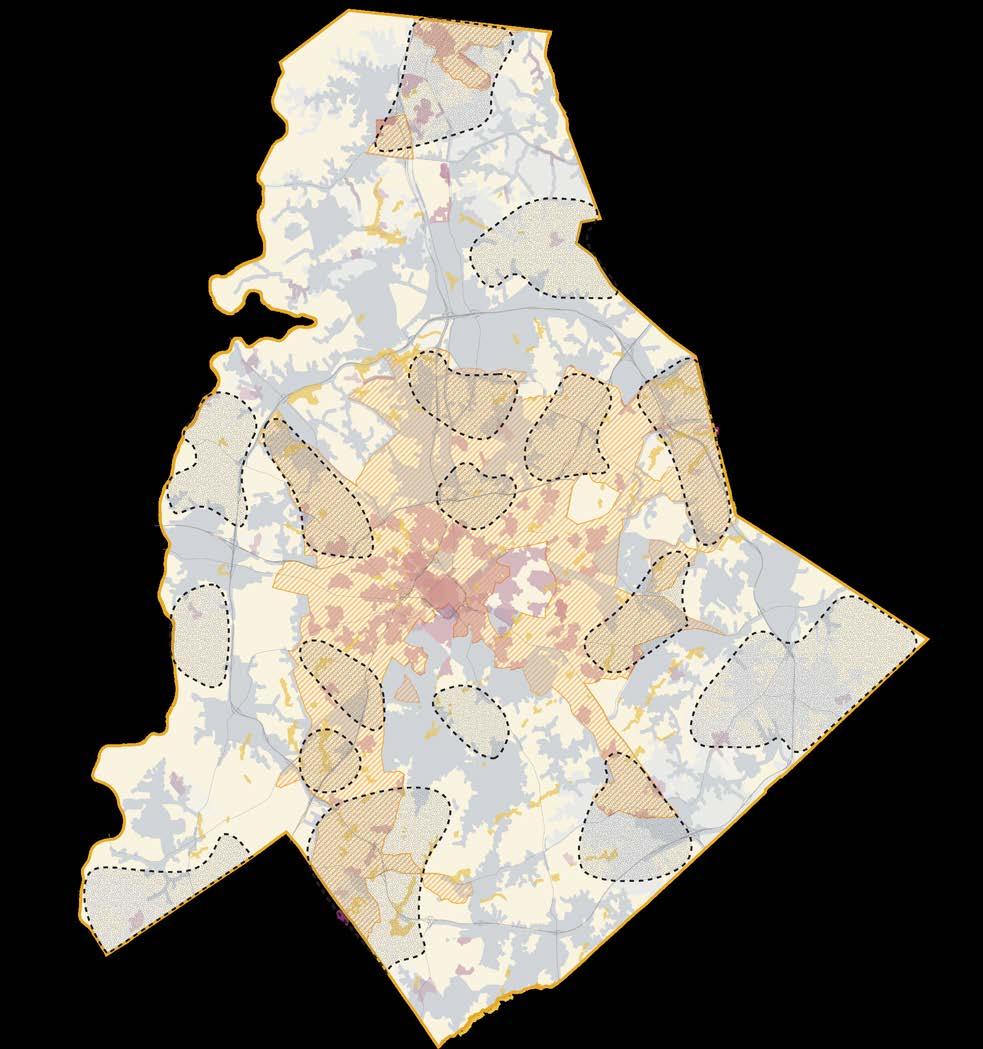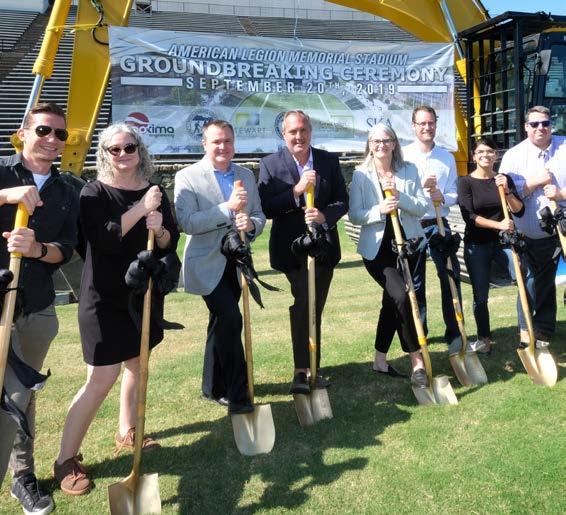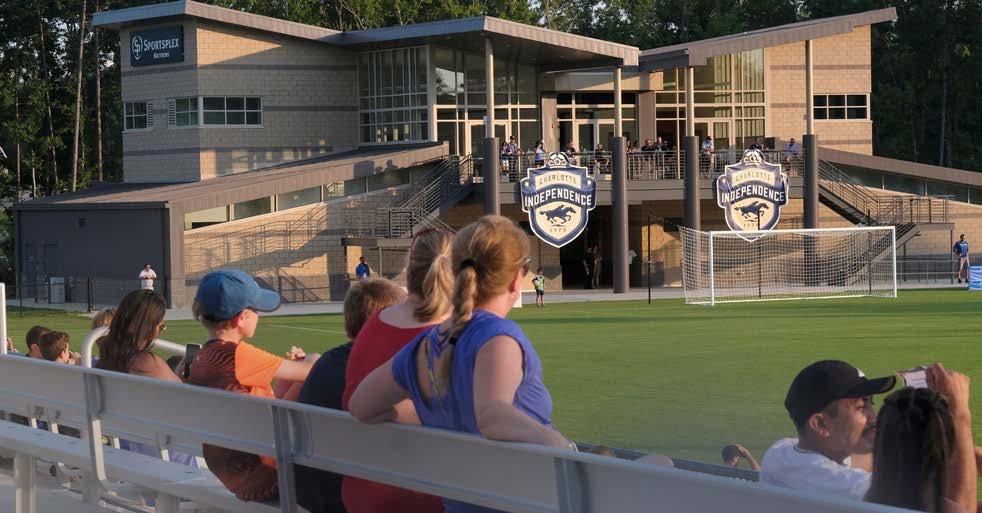
5 minute read
Goal #3 New Investments
Goal #3 New Investments Create the highest quality places and programs in all areas of the County.
3.1 Design and deploy data systems and indexes to collect, calculate, and communicate metrics for evaluating the equity performance of Mecklenburg Park & Rec.
Advertisement
Conceptually, many residents agree that parks are beneficial; yet, they often remain categorized as “nonessential”. As a general trend, park and recreation departments nationwide are less prioritized when competing for funding with mandated services. Data can help to support budget requests. Data-driven decisions are needed to better make the case for the essential contributions of park, open space and recreation services as well as to ensure that investments are shared equitably across the system and, particularly, to neighborhoods and places that have not received recent funding. Mecklenburg County has already been building up its database of basic community and infrastructure data and successfully maintains metrics on a variety of topics including the City of Charlotte/Mecklenburg County Quality of Life Explorer data and air quality information. This data can be leveraged, along with other sources, to drive future recommendations.
There are many national examples of harnessing community data toward more equitable decisions. Minneapolis, Milwaukee, Pittsburgh, and Portland are all leading the way, through different methods, and offer lessons for Mecklenburg Park & Rec. In particular, the Minneapolis Parks Board created a strategy for capital investments that centers around race and equity. This can serve as a model for development of a similar system in Mecklenburg. Minneapolis’ solution is a data-driven, criteria-based system for capital and rehabilitation projects. The system is a matrix that combines various characteristics about an area surrounding a park or facility with characteristics of the facility to create a composite score that objectively indicates if this site is a priority for investment. According to team members at the Parks Board, the datadriven planning still required critical oversight, and it generated surprises. “To ensure the metrics would generate an accurate result, [we] ran the numbers several times and evaluated whether the data reflected the reality parks staff knew on the ground. The power of empirical equity data [is that] it will reinforce what you already know, but it will expose the things you might have had blinders to,” said Adam Arvidson, Director of Strategic Planning.
3.1 Key Actions
Create a data-driven process for equitable decision-making that:
• Consider community characteristics that include data points like population density, youth population, crime statistics, and concentrated area of poverty/racially concentrated area of poverty. In order to factor in
Mecklenburg’s high rates of growth, compared to many other areas of the country, a factor can be added as well for population growth projections. This needs to be balanced against park characteristics that include data points like park amenity conditions, age of park assets, and reinvestment status (can be calculated by recording amount reinvested in recent years in relation to total replacement value). Much of this data can be translated from the Meck
Playbook inventory.
Airport
2.8 When considering both walkability and driveability, gaps still exist, indicating where new parkland investments are most needed. Current Walkability and Driveability Indicate Where New Investments are Needed
Zone beyond a 10-minute walk or 5-minute drive to a park
Priority community
10-min walk
5-min drive
3.2 Expand participatory budgeting to promote open and informed resource allocation decision making.
Throughout community engagement efforts, calls for equity in decision making were echoed by calls for equity in financial allocation. With the successful County budget public engagement process as a guide, Mecklenburg Park & Rec could implement a similar budget process that directly responds to community needs and aspirations. This approach would assist in ensuring a degree of financial transparency and citizen agency. Similar to participatory budgeting, community members democratically decide how to spend a portion of a public budget. Proposals are often sourced from the community, and subject to a vote by a community board. The community board narrows down proposals to a select few which are then placed on a yearly ballot. This process has many benefits. It provides influential paths to individuals who wish to champion specific issues. It is an educational tool for understanding how municipal budgets and decisions are made. Community members are often guided by municipal staff, fostering connections and relationship building. Also, if accepted proposals include interventions that occur within the park system, this could open additional funding streams for Mecklenburg Park & Rec. Perhaps the greatest benefit, however, is that it invites civic participation and a sense of trust about where resources are allocated. The process would provide a tangible and direct way for community members, especially those without a history of participation, to become involved. It would support other goals in this document such as the creation of an engagement team and tying innovation to implementation. The City of Seattle engages in a participatory budgeting initiative that spans many departments. It is a guide for how a cross divisional process can be implemented. Seattle’s Your Voice, Your Choice: Parks & Streets program is a partnership between Seattle Department of Neighborhoods, Seattle Department of Transportation, and Seattle Parks and Recreation. Seattle Department of Neighborhoods leads the project by collecting ideas, evaluating the proposals, and organizing voting. Seattle Parks and Recreation funds and implements park specific projects, while Seattle Department of Transportation funds and implements the street improvement projects. A sample of 2019 projects that received funding included improvements to basketball courts, maintenance to kiosks and pavilions, new benches, ADA improvements to parks, and restoring park entryways. A Department specific community budgeting process would reveal which interventions community members value most, even before projects are identified within the Capital Improvement Plan (CIP). Imagining this pool of funds like a ”flexible fund,” would mitigate concerns about the ability to use pre-planned funds to meet emerging needs. This may mean the flexible pool is used for unforeseen infrastructure improvements one year and habitat restoration the next. Identifying community priorities first, before setting any budget restrictions, would also allow community engagement to guide the process. Nearby, the city of Durham, North Carolina has adopted a similarly flexible model. It has implemented a process for residents to support one-time projects that improve physical infrastructure, technology, or general community enhancements.
3.2 Key Actions
Incorporate community input into financial decisions by testing a new process:
• Expand participatory budgeting process by allocating a portion of the capital budget for each project to a discretionary pool whose use is determined specifically through the design engagement process for the site.
• Alternatively, the Department should allocate a set of funds for a participatory budget process County-wide where the community can determine on which projects those additional funds should be used.













